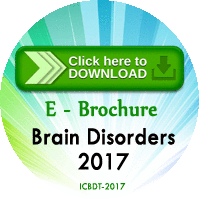
Ana Gamez Valero
Universitat Autònoma de Barcelona, Spain
Title: Specific platelet microRNA signature for Dementia with Lewy bodies as promising biomarker
Biography
Biography: Ana Gamez Valero
Abstract
Dementia with Lewy bodies (DLB) shows overlapping features with Alzheimer disease (AD) leading to its misdiagnosis and hindering its adequate treatment. It is well established that microRNAs play an important role in neurodegeneration and they can be found in brain and the central nervous system. Since 30 years, the presence of RNA (mRNA and microRNA) in platelets has attracted attention and different mRNA expression patterns have been reported to be altered in human diseases. Our main objective was to identify disease specific mRNA and miRNA biosignatures through the analysis of platelet rich plasma (PRP) obtained from DLB patients (n=31), AD patients (n=10) and age-matched control individuals (n=31). After isolation of mRNA and miRNA from PRP, we analyzed SNCA and GBA mRNA expression levels in DLB patients and controls by reverse-transcription real time PCR; next generation sequencing was applied for miRNA discovery in the same samples. 22 miRNAs were differentially expressed and selected to be validated by real time qPCR. From those, 9 were considered as potential biomarkers for DLB being evaluated in a group of AD patients and independent groups of control and DLB individuals. Interestingly, miRNAs levels seemed to correlate with clinical symptoms and to correlate inversely with SNCA-mRNA expression in DLB patients. These results, although replication and follow-up with larger, carefully characterized cohorts are needed, represent an integrated miRNA and mRNA profile in platelet rich plasma that is likely to provide non-invasive biomarkers for the differential diagnosis of DLB versus AD.

